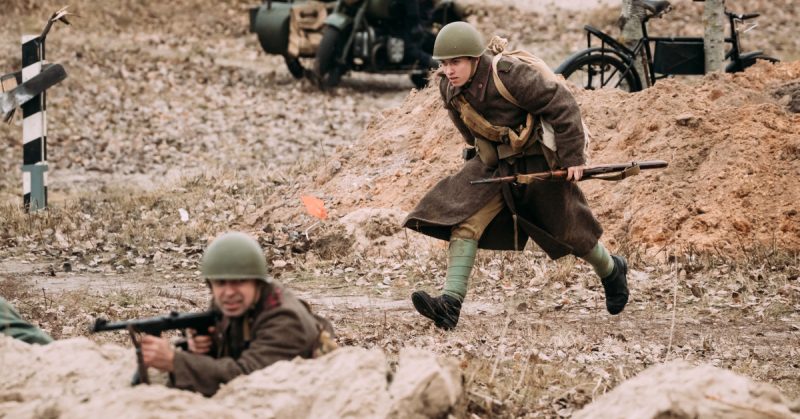Bombs explode in the distance. The soldiers hear the thump of artillery shells and duck away from a strafing fighter. They are urged forward by a political commissar while every other man is given a rifle.
As they stumble toward the enemy, they glance over their shoulders and see the dreaded NKVD ready to shoot any deserters. They run into the massed fire of the Germans, and our hero finally grabs a rifle left behind by one of his dead comrades.
The above describes the opening scene to the Hollywood blockbuster Enemy at the Gates and sustains a myth that the Soviets sent soldiers into combat without enough rifles. But this concept is mostly a product of Hollywood movies, propaganda, and the disastrous performance of the Soviet army in the early stages of the war.
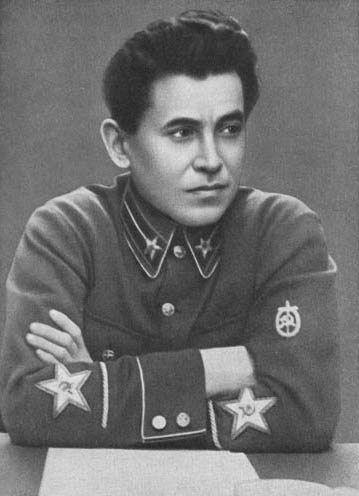
Stalin’s actions in the late 30s crippled the Soviet army. Most of the senior officers were purged and those that remained were convinced that their lives depended upon rigid applications of the textbook, regardless of battlefield conditions.
Stalin was desperate to maintain the peace with Germany, so he forbid units on the front lines from taking basic and proper defensive preparations. Forward units were sometimes as much as 80km (50 miles) from the front lines, which were lightly held by NKVD personnel.
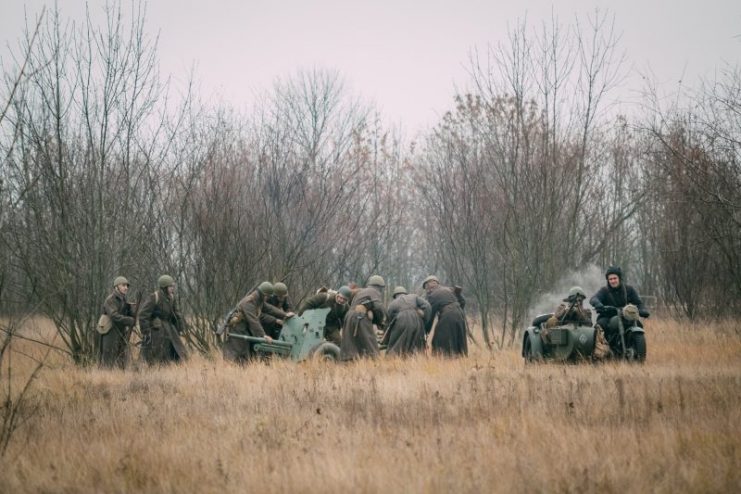
Their recent conquest of some Polish and Baltic territory meant that the army had little time to prepare new defenses for locations that were far from core Soviet territory. At the time of the invasion, the Soviets were reorganizing leadership positions, orders of battle, and defensive plans.
In the early days of the war, the complete strategic surprise and decisive penetration by German units quickly turned the Red Army into little more than a mob.
On the second day of the invasion, Red Army Group 10 tried to counter-attack according to a preconceived plan. However, the shattered telephone lines, jammed radios, overwhelming air power, and an enemy that seemed everywhere at once, quickly turned that unit into a handful of desperate fugitives seeking escape.
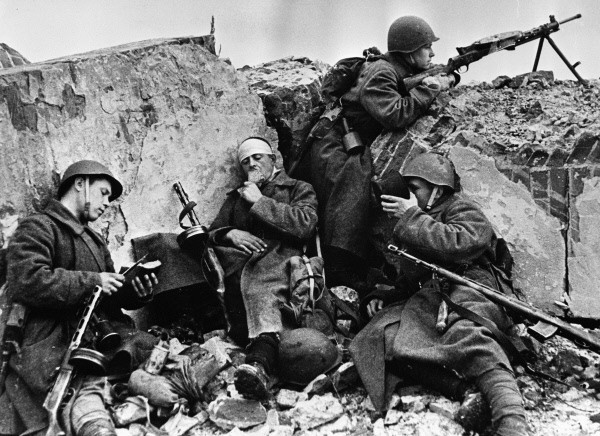
In addition to almost 4 million soldiers being wounded, captured, or killed, the Soviets quickly had to move key factories away from the German advance.
The reality on the front was so bad and leaders like Stalin were so out of touch that many Soviet units that no longer existed were being sent orders to counter-attack from locations they had fled days before. Officers who did know the true situation were too afraid of being purged to contradict Stalin and simply passed on the ridiculous instructions.
The end result was what seemed like a mass of riflemen without rifles being urged forward in human wave attacks by incompetent generals and political officers.
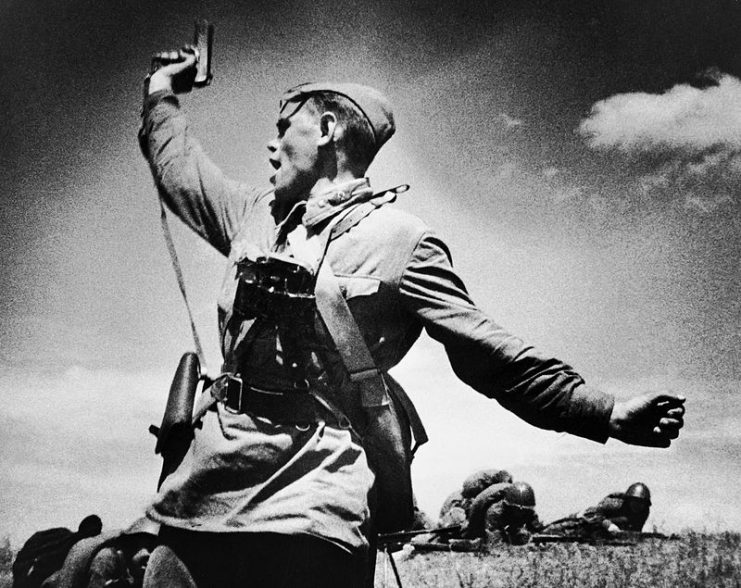
Once the German offensive was blunted by December of 1941 and the industries had been relocated, the Soviets reorganized their remaining field armies around rifle divisions with limited advanced weaponry of tanks and artillery. (Most of that equipment was in short supply anyway and these units were easier for the inexperienced Soviet commanders to employ.)
On December 9, 1941, General Zhukov actually forbade the kind of frontal assaults seen in Hollywood movies. Instead, they focused on solid defensive principles such as a flexible defense in depth, massing anti-tank guns on likely avenues of approach, and infantry assaults coordinated with artillery.
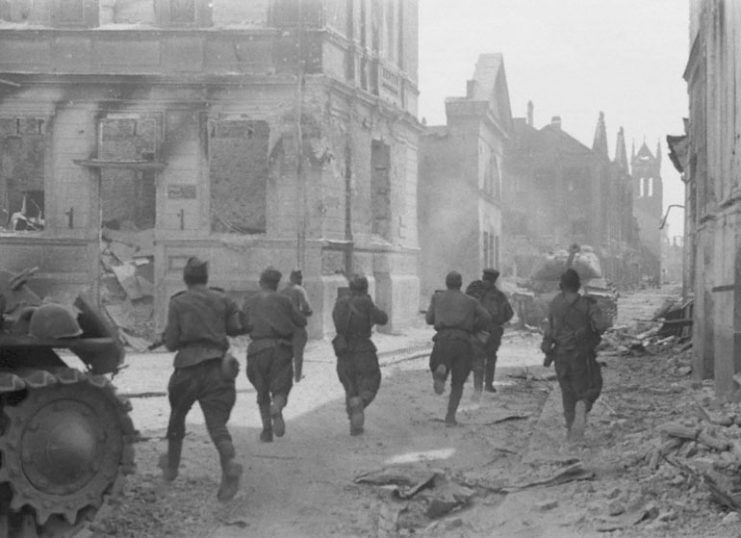
Such maneuvers stalled the German advance and allowed the Soviets to survive. In late 1942, they began to implement offensive operations using heavy armor called Deep Battle which ended up being more effective than the Blitzkrieg.
The devastating German attack in 1941 created a mass of confusion that nearly overwhelmed Russia and almost knocked them out of the war in a decisive stroke.
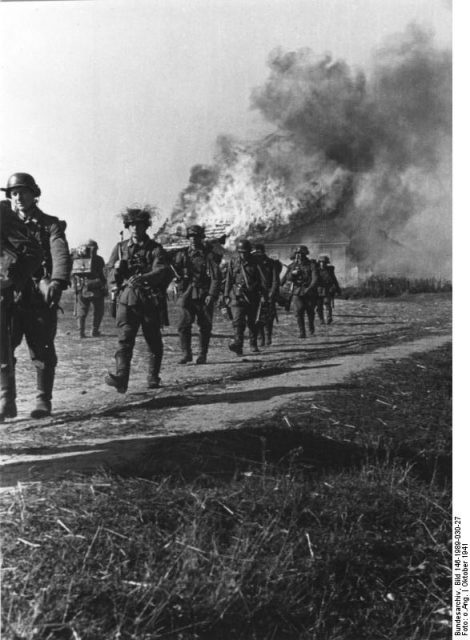
Bundesarchiv, Bild 146-1989-030-27 / CC-BY-SA 3.0
Read another story from us: Anti-Tank Missile Vehicles – 22 Facts About the Soviet 2P Series
As a result of the shattering German offensive, many Soviet infantrymen would often launch futile counter-attacks and usually had to mount desperate escapes without their original guns and equipment.
But very quickly Soviet tactics changed. Not only did they excel at supplying rifles, but also they arguably did the most to win the war against Germany.
